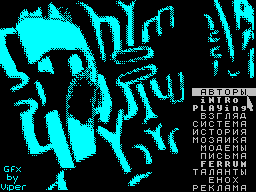|
KrNews #07
15 января 1999 |
|
History - Microprocessors.

_
Microprocessors
_
(C) Mark Gerets, Byte No. 9, 1985
(C) Viper / Techno Lab, 1998
Informal History
In 1959, engineers from the firm's Texas
Instruments figured out how to arrange
more than one transistor on the same
substrate and to connect these transistors without
wires. Thus was born the integrated chip, or abbreviated as IP.
In Currently, such thin flat
pieces of silicon can contain millions
transistors, they are called simply chips.
In 1969 the firm, which lasted for
then only one year, called
Intel, announced the creation of microchips,
containing 1 Kbit Memory type RAM. Then
yet there was no other computer
chips, which could bind
This memory chip, but there were many
Other applications for such chips,
the more so because this was the most capacious memory of all
those that made up since then.
Around the same time - the summer of 1969
year - the firm Intel has addressed the Japanese
Company Busycom, engaged in release
calculators, with the order for production
a set of specialized chips.
Chips were developed by engineers
Company Busycom for a new family of calculators that a Japanese
firm. Calculators should contain several chips, each of which
consisted of 3000-5000 transistors.
Group of engineers from the firm Busycom, which won
representation in the firm Intel, was given by one of Intel's
its developers Ted Hoff. Hoff met with the project, proposed by
Busycom, and found that the project is too
difficult to be profitable. Prior to that he worked with
computer-PD-7 from Digital Equipment Corporation (DEC), which
has a very limited set of commands.
Hoff decided that the complexity of the calculator can be
greatly reduced if you use it a little generic processor. Such
an approach, using software instead of electronic logic for
computing, has dramatically increase the need for the
calculator memory, but at the moment as Intel's times and
engaged in the production of devices memory. Hoff also realized
that such a processor could be applied to other applications,
and he sold his idea to the leadership of the company Intel.
Developers firms Busycom still
continued to work on his original draft, when the Hoff and his
team began working on an alternative project. While engineers
from the firm Busycom to the limit of its simplified design, all
equal to each chip should contain more than 2000 transistors,
and running calculator required 12
such circuits. Group Hoffa believed
that their processor will require 1,900
transistors.
Hoff won the general-purpose processor
competition with the project company Busycom, and
Intel's got a contract from Busycom
the production of general-purpose processor chips, which was
later name 4004.
4-bit microprocessor
Direct production of chips was quite difficult,
until early 1970, by Intel
not yet begun to cooperate Frederico Fadzhin
(Who later founded the firm Zilog).
Frederico Fadzhin brought on chip
concept stage to the silicon crystal in just nine months.
First, Intel's 4004 processor sold exclusively firm Busycom,
but the summer of 1971 year won the right to sell the chipset
to other manufacturers.
In November 1971, the company touted its Intel 4004 as a
four-digit processor that performs 60,000 operations
second. By February 1972 the company Intel
sold these sets on the processor
$ 85 000 dollars.
Birth of an 8-bit microprocessor
At the same time as the developed
processor 4004, the company CTC (Computer
Technology Corporation, now Dataroint)
invited the two companies - Intel and Texas
Instruments - develop BISy for her
new intelligent terminal. Both
the company offered an 8-bit processor
general purpose. You can trace the development of a stereotype:
4-bit processor for calculators as calculators operate in BCD
code and 8-bit to the terminal because
terminals are dealing with symbols.
Firm CTC did not select any one of these
options, it built its own terminal
to standard logic chips.
Nevertheless, both Intel and TI (Texas
Instruments) continued to work on their projects. Texas
Instruments in the late all received a patent for its chip,
Intel and the company gave birth to the processor 8008.
Processor 8008, submitted in April 1972, was the first pop-in
market for 8-bit microprocessor. He
demanded at least 20 chips
support, but could carry 45 teams
at a rate of 300,000 instructions per second and
could address a monstrous amount of memory in 16 KB. At that
time it was a huge amount of memory and the processor 8008 was
a serious step up from the processor 4004.
Documentation on microprocessor 4004
and 8008 was a solid mystery. It assumes that you know
everything that was in this area before you start
read this documentation. So has the disadvantage of most of the
technical References to this day.
The initial aim was to firm Intel, designing microprocessors
4004 and 8008 was the replacement of "arbitrary logic" - in
other words, "A set of ISI and ICI, joined together
other wires. "Very few thought then that these devices can
useful for general-purpose computers. But some visionaries
were intrigued by the very possibility of
have computers, which
capable of doing anything. True
before there were kits, of which
it was possible to assemble computers, but they are more suited
to demonstrate the principles of computer technology, than to
perform computing tasks. The availability of the processor 8008
is radically changed the situation.
In 1973, the company Selby Computer
Consulting Engineering announced the creation of the first
universal micro-computers in based mikoroprotsessora 8008. For
this followed by machine RGS-008 RGS firm
Electronics. Then, in July 1974 RadioElectronics magazine
introduced readers to the microcomputer Mark-8, developed
Jonathan Titus.
Up to this point all the articles and advertisements about
the micro-EVN ended publications in the amateur publications.
Mark-8 was the first microcomputer, which was reported in
Journal of the common problems of electronics. These are the
first microcomputers were still more demonstrative than helpful,
but the microcomputer revolution began.
to be continued ...
Other articles:
Similar articles:
В этот день... 15 December